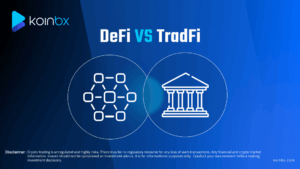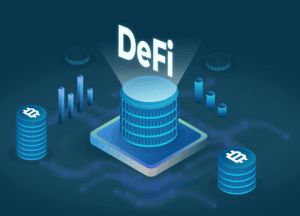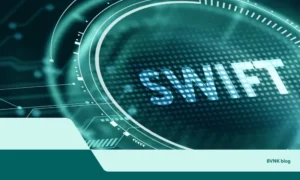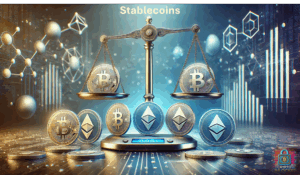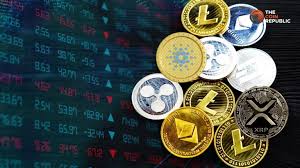The financial world is undergoing a fundamental shift—not with a bang, but with a block. Blockchain, once relegated to the fringes of tech speculation, is now reshaping the very architecture of global finance. The days of waiting for wire transfers, relying on centralized intermediaries, or questioning opaque systems are being challenged by transparent, programmable, and borderless alternatives.
But how exactly is blockchain turning the tide from fiat to digital? And what does this mean for the future of finance?
The Fiat Foundation: A Legacy System Under Pressure
For decades, the global financial system has rested on fiat currencies—government-issued money not backed by a physical commodity but by trust. Fiat systems, while robust, are deeply centralized, often inefficient, and vulnerable to inflation, political influence, and systemic risks.
Take cross-border payments: transferring money internationally through traditional banking channels can take days, incur high fees, and require multiple intermediaries. Similarly, lending, borrowing, and investing often come with strict gatekeeping and limited access—particularly for the unbanked.
Enter blockchain: a decentralized digital ledger that promises to cut through these inefficiencies and create a more open financial world.
Blockchain Basics: The Infrastructure of Digital Finance
At its core, blockchain is a distributed ledger technology (DLT) that records transactions across a network of computers. Its immutability, transparency, and decentralization make it a game-changer for finance.
Rather than relying on central authorities (like banks or clearinghouses), blockchain enables peer-to-peer value exchange—fast, secure, and without intermediaries. This opens the door to a suite of innovations that are redefining what money, assets, and even trust look like.
Let’s break down some key components that are steering the shift:
1. Cryptocurrencies: A New Form of Digital Money
Bitcoin introduced the world to the concept of decentralized digital currency. While its use as a payment method is still debated, its real value lies in being a store of value outside traditional financial controls.
Ethereum took things further by introducing programmable money through smart contracts. Today, thousands of cryptocurrencies represent everything from decentralized lending platforms to tokenized real estate.
Unlike fiat currencies, many cryptos are governed by code rather than central banks—introducing scarcity, transparency, and global accessibility.
2. Stablecoins: The Bridge Between Fiat and Crypto
Stablecoins like USDC, USDT, and DAI are pegged to fiat currencies (usually the US Dollar) but operate on blockchain networks. These digital assets combine the price stability of fiat with the efficiency and programmability of crypto.
They’re increasingly used in trading, remittances, DeFi applications, and even in developing central bank digital currencies (CBDCs).
3. DeFi: The Rise of Decentralized Finance
Decentralized Finance (DeFi) protocols replicate traditional financial services—such as lending, borrowing, and trading—without intermediaries.
Platforms like Aave, Compound, and Uniswap have introduced permissionless, automated financial ecosystems where anyone with an internet connection can participate. The total value locked (TVL) in DeFi protocols has surged in recent years, signaling both demand and belief in these open systems.
The Institutional Shift: Not Just a Retail Phenomenon
It’s not just individual users flocking to digital finance. Institutions are paying attention—and increasingly participating.
- PayPal, Visa, and Mastercard now offer crypto services or integration.
- BlackRock and other major asset managers are launching Bitcoin ETFs.
- Central banks are exploring or piloting CBDCs, recognizing blockchain’s potential to modernize monetary policy tools.
These developments signal that blockchain is not just a tech experiment—it’s a force being woven into the fabric of mainstream finance.
The Benefits: Why Blockchain-Based Finance Is Gaining Traction
Blockchain’s appeal lies in the solutions it offers to longstanding pain points:
1. Transparency and Trust
All transactions on a blockchain are recorded and verifiable. This level of transparency drastically reduces fraud and increases accountability—especially in a time when trust in financial institutions is waning.
2. Lower Costs and Greater Speed
By removing intermediaries, blockchain can reduce fees for transactions, cross-border payments, and asset transfers. Transactions that once took days can now settle in minutes or seconds.
3. Financial Inclusion
Blockchain removes barriers for the unbanked and underbanked. With just a smartphone, individuals in remote regions can access global financial services, invest, save, or earn yield.
4. Programmability and Innovation
Smart contracts allow developers to build applications that automate financial logic—everything from decentralized insurance payouts to algorithmic stablecoins. This unlocks unprecedented innovation across sectors.
Challenges and Considerations: The Road Ahead
While the shift from fiat to digital is accelerating, it’s not without hurdles.
- Regulatory Uncertainty: Governments are still catching up, with varying approaches to taxation, compliance, and legality.
- Scalability: High gas fees and network congestion remain issues for some blockchains, though Layer 2 solutions are emerging.
- Security Risks: Smart contract bugs and protocol exploits have led to millions in losses—highlighting the need for better audits and standards.
- User Experience: For mass adoption, interfaces must become more intuitive and user-friendly.
Despite these challenges, the momentum is clear: the financial world is being reimagined from the ground up.
What This Means for the Future
We’re witnessing the early stages of a global financial transformation. Blockchain isn’t replacing fiat overnight, but it’s redefining how we interact with value.
In the future:
- Central banks may issue programmable digital currencies.
- Tokenized stocks and bonds could be traded 24/7 on global platforms.
- Smart wallets may automate budgeting, investing, and insurance.
- DAOs (Decentralized Autonomous Organizations) might manage investment funds and treasuries transparently.
The transition will be gradual and complex, but the writing is on the wall: the future of finance is decentralized, digital, and powered by blockchain.
Final Thoughts: Adapting to the New Financial Order
For consumers, investors, and institutions, the question is no longer if blockchain will reshape finance—it’s how fast and how deep.
The shift from fiat to digital is more than a trend. It’s a paradigm shift—one that promises greater transparency, inclusion, and innovation. Staying informed, adaptable, and curious will be essential in navigating this rapidly evolving landscape.
Because in a world rewritten by blockchain, those who understand the new rules will shape the future of finance.

